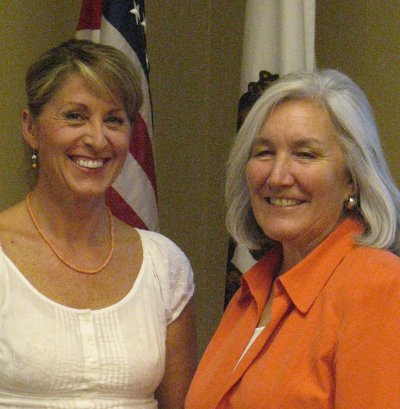- Elizabeth Larson
- Posted On
Legislature works on state budget compromise
On Tuesday the legislature approved a controversial budget deal – that both sides admitted was far from perfect in addressing the core issues with the state budget – an action that was met by a veto threat from Schwarzenegger.
Late Friday afternoon, the Senate voted on budget compromise measures worked out between Schwarzenegger and legislative leaders.
A statement from Senate Pro Tem Don Perata said that the actions taken Friday will restart payments to schools, community colleges, day care centers, health care providers and others that have been hurt by the 81-day budget stalemate.
The two measures approved Friday include:
‒ SB 28: This legislation removes provisions in the budget increasing tax withholding 10 percent on all taxpayers and establishes a higher, 20-percent penalty for corporations that underreport their taxes by $1 million or more. The vote was 22-14.
Legislators expect SB 28 will increase revenues in the short term as companies catch up on taxes from previous years, while reducing the underreporting rate and increasing tax compliance in the future.
‒ SCA 30: The bill adds a provision to build a rainy day reserve fund into the budget reform constitutional amendment sent to the governor. It also will withdraw funds from the Budget Stabilization Fund when state revenues fall below projected spending. The vote was 30-0.
“I am tempted to say I am ‘relieved,’ except that might suggest I am happy about this budget, and I’m not,” Sen. Patricia Wiggins said in a written statement late Friday. “Budgeting requires compromise, and even though it was clear from the outset that no one, or no one group, was going to get everything they wanted, there was some pretty serious resistance to a number of options that might have allowed us to pass a budget that was more responsible.”
Wiggins said the real relief, if there's any, in completing the budget deal will be for schools, health care providers and child care providers, vendors doing business with the state and others who were not getting paid, reimbursed or otherwise supported by the state because of the protracted budget stalemate.
In the end, the Senate agreed to pass a budget without raising taxes. Wiggins suggested that increasing some taxes, at least temporarily, is the most responsible way to bring the state budget into balance.
However, even without raising taxes, the budget manages to restore full funding for the Cal Grant program for college students, restores most of the 10 percent Medi-Cal rate cuts and restores almost all cuts to Medi-Cal eligibility.
Wiggins noted that the budget also rejects Schwarzenegger deep cuts for the safety social net, including children’s services and foster care, CalWORKs kids’ eligibility and In-Home Supportive Services; and restores cuts in funding for COPS grants, juvenile justice and other law enforcement programs.
Schwarzenegger could still attempt to cut those programs through the line-item veto, Wiggins said.
The three-month budget stalemate held up billions of dollars from the state's communities, said Wiggins. That resulted in schools putting off hiring teachers, while hospitals and health care providers were forced to either take out loans or use personal funds to stay open. Some child care centers went into crisis mode because of no payments, and Medi-Cal payment cuts to health centers left providers no choice but to cease taking new patients or cut off care altogether.
Wiggins called the state's current budget process “a mess,” which she attributes to the two-thirds vote requirement to pass a budget. California, Arkansas and Rhode Island are the only states that pass budgets in that way, which Wiggins said should be abandoned for a majority vote rule.
“We also need to get to a point where the people of this state – and their elected representatives – make real, and likely difficult, decisions about what programs and services we provide and how much we are willing to spend to provide them,” she said.
E-mail Elizabeth Larson at This email address is being protected from spambots. You need JavaScript enabled to view it..
{mos_sb_discuss:3}











